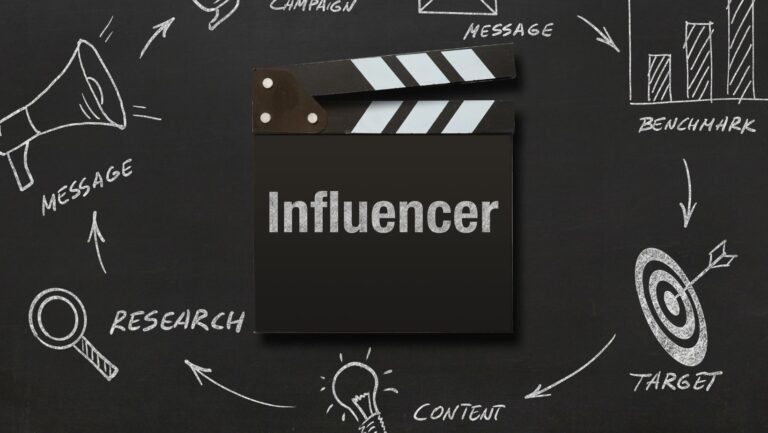Crafting a Compelling Brand Story to Connect with Your Audience

Consider the following scenario: you’re scrolling through your social media feed when you come across a video by Gary Vaynerchuk, also known as Gary Vee.
In the video, he describes how he converted his father’s little wine shop into a multi-million-dollar enterprise.
His charisma, vulnerability, and enthusiasm captivate you as you listen to his story. Before you know it, you’re addicted to his content and looking forward to his next video.
Gary Vee has perfected the art of telling an engaging brand story.
A compelling brand story will establish a strong bond with your target audience, creating loyalty and trust.
Understanding Your Target Audience
Before you can craft a brand story that resonates with your target audience, you must first understand who they are. Knowing your audience’s demographics and psychographics will assist you in crafting a tale that relates to their values, desires, and aspirations.
Identifying your audience by using demographics which refer to the statistical data about your target audience, including age, gender, location, income, and education level.
Also, use psychographics to delve deeper into their personalities, values, interests, and lifestyles.
Collect this information:
- Market research: Conduct surveys, interviews, or focus groups to gather firsthand insights from your potential customers.
- Social media analytics: Platforms like Facebook, Instagram, and Twitter offer tools to analyze your followers’ demographics and interests.
- Web analytics: Use tools like Google Analytics to examine the behavior of visitors on your website.
Crafting your brand’s unique narrative
A fascinating brand narrative serves as the cornerstone of your brand story, incorporating your objective and vision, as well as the history and journey of your brand.
Developing your unique narrative, ensures that it aligns with the values and needs of your target audience, making your brand more relatable and appealing.
Incorporate real-life examples that demonstrate your values and the benefits your brand provides.
This not only gives your story greater credibility, but it also allows your audience to witness the real-world impact of your products or services, making your brand narrative more compelling.
Establishing your brand’s mission and vision
Your brand’s purpose is defined by your mission statement, while your vision statement highlights your long-term aims and aspirations.
They work together to establish a roadmap for your brand story and help your audience understand your brand’s essence.
- When crafting your mission and vision statements, consider:
- What problem does your brand solve?
- How do you improve your customers’ lives?
- What sets you apart from competitors?
- What kind of impact do you want to have on the world?
Covering your brand’s history, journey, and progress may give an enthralling narrative that showcases your evolution and growth.
Sharing your brand’s milestones, challenges, and accomplishments humanizes it and allows your audience to relate to your story.
Consider these elements when sharing your brand history
The founding story: Share the inspiration behind your brand and what motivated you to start your business.
Challenges and victories: Highlight how you overcame obstacles and the lessons learned along the way.
Growth and evolution: Display how your brand has adapted and evolved over time, reflecting on key achievements and milestones.
Consider the following when sharing real-life examples
Authenticity: Share genuine stories that reflect your brand’s values and ethos. Avoid exaggerating or fabricating details.
Relatability: Choose stories that your audience can identify with, displaying how your brand addresses their needs or aspirations.
Impact: Highlight the tangible impact your brand has on customers’ lives, highlighting the benefits of your products or services.
Humanizing Your Brand

Humanizing your brand is critical for establishing emotional connections with your target audience.
Share stories about the people behind your company, such as employees, founders, and partners, to connect with your audience on a more personal level.
This makes your brand more approachable and memorable.
Incorporate relatable characters and scenarios into your storytelling to show how your brand affects people’s lives.
This allows your audience to engage with your message more effectively, resulting in a stronger affinity for your brand.
Consider these approaches
- Employee spotlights: Share profiles or interviews with team members, highlighting their roles, passions, and stories.
- Founder’s journey: Offer a glimpse into the life of your founder(s), discussing their motivations, challenges, and successes.
- Collaborations and partnerships: Highlight how your brand works with other organizations or influencers to achieve shared goals.
Using relatable characters and scenarios in your storytelling
Incorporating relatable characters and scenarios in your brand story can help your audience better connect with your message. Consider these tips:
- Develop personas: Create fictional characters that embody your target audience’s traits, needs, and challenges.
- Share customer stories: Highlight real-life experiences from customers, displaying how your brand has impacted their lives.
- Use metaphors and analogies: Employ relatable metaphors and analogies to help convey complex concepts or ideas.
Showcasing the impact your brand has on people’s lives
Demonstrate how your brand positively influences customers’ lives by sharing stories of the impact you’ve made. This could include:
- Testimonials: Collect and share quotes or reviews from satisfied customers.
- Before-and-after stories: Showcase the transformation, your customers have experienced through your products or services.
- Community involvement: Highlight your brand’s efforts in giving back to the community, highlighting the impact of your initiatives.
Incorporating Storytelling Elements

Incorporating storytelling aspects into your brand story can improve its appeal and engagement.
Create a story arc that comprises a setting, conflict, and resolution to give your tale structure and consistency.
Create a consistent brand voice and tone and enhance your story with visuals and multimedia.
Consistency in voice and tone ensures that your brand is easily identifiable across many platforms, while visuals and multimedia, such as photography, films, and infographics, bring your story to life and make it more memorable for your audience.
- Setting: Establish the context of your story by sharing background information about your brand, industry, or customers.
- Conflict: Identify the problem or challenge your brand aims to address, highlighting the stakes and obstacles involved.
- Resolution: Display how your brand overcomes the conflict, demonstrating the benefits and impact of your solution.
- Personality: Define your brand’s personality, such as playful, authoritative, or empathetic, and ensure your messaging reflects this.
- Language: Use language that resonates with your target audience, avoiding jargon or overly technical terms.
- Tone: Maintain a consistent tone, whether it’s conversational, formal, or humorous, to create a cohesive brand experience
- Photography: Use high-quality images that showcase your products, team members, or customers, helping to illustrate your brand story.
- Videos: Create compelling video content, such as interviews, product demonstrations, or behind-the-scenes footage, to share your story in a dynamic format.
- Infographics: Design visually appealing infographics to convey complex information or data in a digestible and engaging manner.
List of top story archetypes, often referred to as the “Seven Basic Plots” or “The Hero’s Journey”:
Overcoming the Monster: The protagonist faces a great evil or monstrous antagonist and must overcome it to restore balance or save others. Examples: “Beowulf,” “Jaws.”
Rags to Riches: The protagonist begins in a lowly state and eventually achieves greatness or success, often overcoming significant obstacles along the way. Examples: “Cinderella,” “The Pursuit of Happyness.”
The Quest: The protagonist embarks on a journey to achieve a goal or fulfill a mission, often facing challenges and temptations along the way. Examples: “The Lord of the Rings,” “Indiana Jones and the Last Crusade.”
Voyage and Return: The protagonist travels to an unfamiliar world or realm, learns valuable lessons or gains new perspectives, and returns to their original world, transformed by their experiences. Examples: “Alice in Wonderland,” “The Lion, the Witch, and the Wardrobe.”
Comedy: A lighthearted story that typically involves misunderstandings, mistaken identities, and other comedic situations, eventually leading to a happy resolution. Examples: “Much Ado About Nothing,” “The Hangover.”
Tragedy: The protagonist experiences a series of unfortunate events, often leading to a catastrophic or sorrowful conclusion. Examples: “Romeo and Juliet,” “Death of a Salesman.”
Rebirth: The protagonist undergoes a transformation, often through a period of darkness or suffering, eventually emerging as a better or more enlightened version of themselves. Examples: “A Christmas Carol,” “The Shawshank Redemption.”
These archetypes can serve as a foundation for crafting a compelling brand story that resonates with your audience.
Leveraging Different Platforms For Storytelling

To maximize the impact of your brand story, leverage various platforms for storytelling, both online and offline.
Optimizing your website for storytelling
Your website serves as the primary hub for your brand story. Optimize your website by
- Crafting a compelling “About Us” page: Share your brand’s history, mission, vision, and values in a narrative format.
- Highlighting customer testimonials: Feature quotes, reviews, or case studies from satisfied customers.
- Integrating visuals and multimedia: Enhance your narrative with images, videos, and infographics that complement your written content.
Utilizing social media, blogs, and other digital channels
Social media, blogs, and other digital channels offer opportunities to share your brand story with a broader audience.
Leverage These Platforms
Creating platform-specific content: Tailor your brand story to suit the format and audience of each social media platform.
Sharing user-generated content: Encourage customers to share their experiences with your brand, amplifying their stories on your channels.
Collaborating with influencers: Partner with influencers who align with your brand values to share your story with their followers.
Exploring offline opportunities
Consider these options
Measuring the Effectiveness of Your Brand Story

Effectively measuring the impact of your brand story is critical to ensuring that it resonates with your target audience.
You can enhance your narrative and maximize its efficacy by monitoring engagement metrics, obtaining feedback, and altering your tale based on insights and trends.
Maintain a list of key performance indicators (KPIs) that measure the success of your brand story. Track website engagement metrics such as time on page, bounce rate, and conversions to see how well your website’s storytelling is resonating with visitors.
Track social media interaction, such as likes, shares, comments, and followers, to determine the effectiveness of your storytelling efforts on social media platforms.
Examine the performance of email marketing campaigns that tell your brand’s story, such as open rates, click-through rates, and conversions.
Seeking feedback from your target audience actively allows you to better grasp their impressions of your brand story and discover opportunities for development.
Distribute surveys or questionnaires to your customers to solicit feedback on your brand’s story and messaging.
Use social media polls to gain instant insights into your audience’s preferences and opinions. To gather more detailed input on your brand story, organize focus groups or one-on-one conversations with customers.
Make data-driven updates to your brand story as you receive insights from your audience and analyze engagement metrics to maximize its impact.
Refine your messaging by changing the wording, tone, or focus of your brand story based on audience input and engagement data.
Keep up to date on industry trends, cultural shifts, and shifting audience preferences, and update your brand story accordingly.
Ensure that your brand story evolves through time, reflecting your brand’s growth and development while remaining relevant to your audience.
Key Points
Final Thoughts
A compelling brand story has the power to foster deep connections with your target audience, building loyalty and trust.
Understanding your audience, crafting a unique narrative, humanizing your brand, incorporating storytelling elements, leveraging various platforms, and measuring your story’s effectiveness, you can create a captivating brand story that resonates with your audience.
Doing so, you will create a powerful connection with your audience, paving the way for lasting success.
FAQ
Q:Why is a compelling brand story important for my business?
A: A compelling brand story fosters a powerful connection with your target audience, building loyalty and trust. It helps differentiate your brand from competitors and makes it more memorable and approachable to your audience.
Q: How do I identify my target audience’s demographics and psychographics?
A: You can identify your target audience’s demographics and psychographics through market research (surveys, interviews, focus groups), social media analytics (Facebook, Instagram, Twitter), and web analytics (Google Analytics).
Q: What elements should I include in my brand’s unique narrative?
A: Your brand’s unique narrative should include your mission and vision, your brand’s history and journey, and real-life examples that demonstrate your values.
Q: How can I humanize my brand through storytelling?
A: Humanize your brand by sharing stories of the people behind your business (employees, founders, partners), using relatable characters and scenarios, and showcasing the impact your brand has on people’s lives.
Q: What storytelling elements can enhance my brand story?
A: Incorporate a story arc (setting, conflict, resolution), a consistent brand voice and tone, and visuals and multimedia (photography, videos, infographics) to enhance your brand story.
Q: Which platforms should I use to share my brand story?
A: Leverage various platforms for storytelling, including your website, social media, blogs, and offline opportunities like events, packaging, and print materials.
Q: How do I measure the effectiveness of my brand story?
A: Measure the effectiveness of your brand story by monitoring audience engagement metrics (website engagement, social media engagement, email marketing performance), gathering feedback from your audience (surveys, polls, focus groups, interviews), and adjusting your brand story based on insights and trends.
Q: How can I adapt my brand story over time?
A: As your brand grows and evolves, ensure your brand story reflects these changes by refining your messaging, adapting to new trends and audience preferences, and highlighting your ongoing journey and growth.
Bio:

Ronnie Patterson
Ronnie Patterson, founder of MagnÜron, is a multifaceted entrepreneur with a diverse background in music, electronics engineering, and engineering management. Drawing on experience across various industries, He offers expertise in SEO, operations, and strategy to help businesses thrive. Possessing a unique perspective and unwavering commitment to collaboration, and ideal partner for growth and success.






